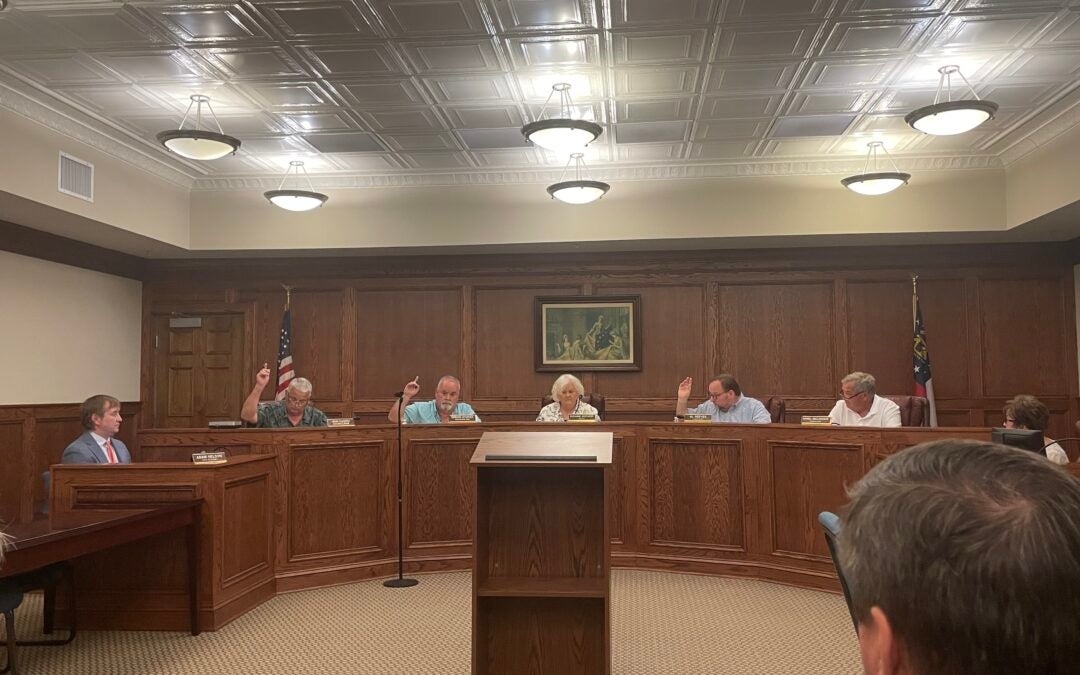This week I’m taking a look at Geocaching. Specifically, a short Geocache tour of the Downtown Augusta area.
Geocaching is essentially a scavenger hunt that uses your phone’s GPS to track your proximity to caches placed by users around the world.
First, download the Geocache app onto your phone, and the map will populate with caches around you. In Downtown Augusta there’s a cache that takes you on a small tour of the downtown area, starting at Springfield Village Park.

Springfield Village
Your starting point for the tour will be Springfield Village on 12th Street. Springfield Baptist Church, just across 12th Street from the park, is all that remains of a once-vibrant African American community in early Augusta. The church housed one of the first independent black congregations in the United States. The congregation purchased the wooden building on the property from Augusta’s Methodist Society. The Methodists had built the building in 1801, and the Springfield congregation purchased it in 1844. The congregation moved the building to its present location after the purchase.
Before the app will tell you the next location, you’ll be asked a question that can be answered by looking around. The task for Springfield Village Park is to count the number of stone benches on the upper level of the park.
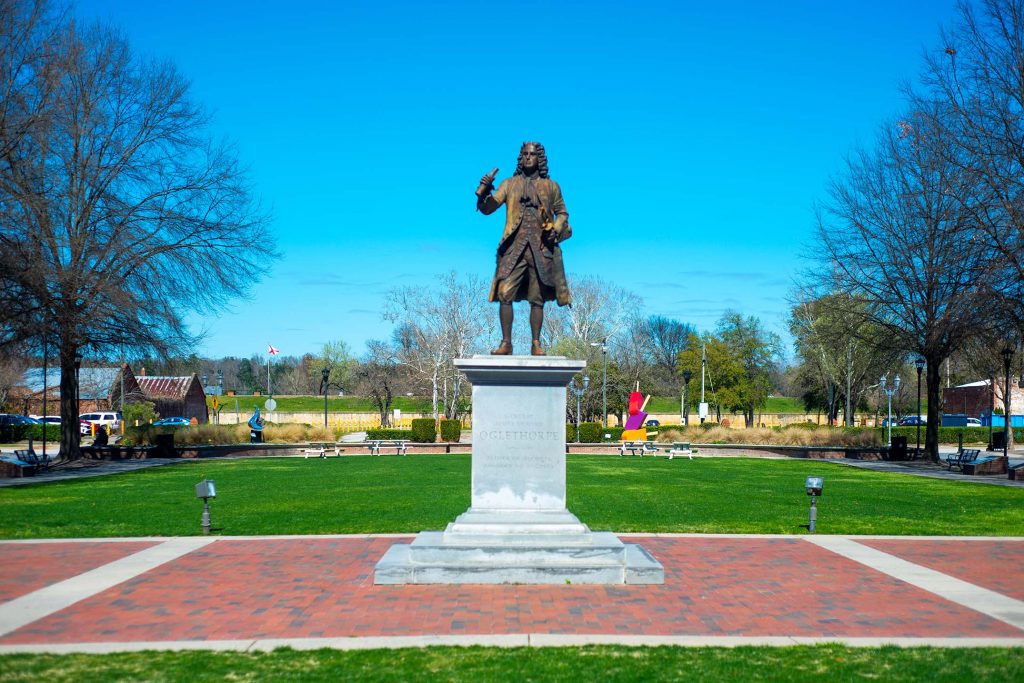
Augusta Common
After counting the benches, the tour takes you to the Augusta Common. The Common is right in the middle of downtown on Broad Street. The green event space was first proposed in 1995, and it was completed in 2002 on a site that previously housed a bunch of dilapidated buildings. It is home to the annual arts festival Arts in the Heart and many other events through the years. The statue there is of James Oglethorpe, Augusta’s founder.
Here, you’ll have to read the statue of James Oglethorpe and select the role that he did not fill.
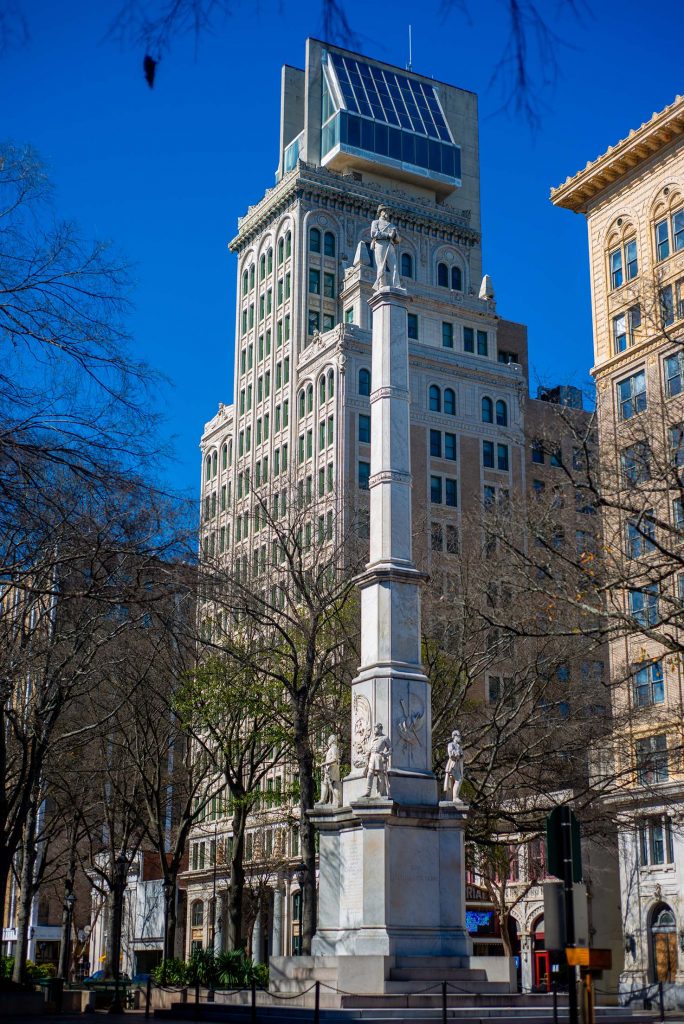
Confederate Monument
The next stop on the short tour is a little farther on down Broad Street. It is Augusta’s Confederate Monument, one of the many monuments throughout America dedicated to the common soldiers who fought in the Civil War. The Ladies Memorial Association commissioned the monument in 1875. Philadelphia architectural firm VanGruder and Young designed the monument and artist Antonio Fontana carved it. The soldier on top is Barry Benson. The monument has been a source of controversy and slated for removal by the Augusta mayor’s blue ribbon committee.
Before you leave the monument, the app will ask how many times total was the word “Worthy” used on the monument.
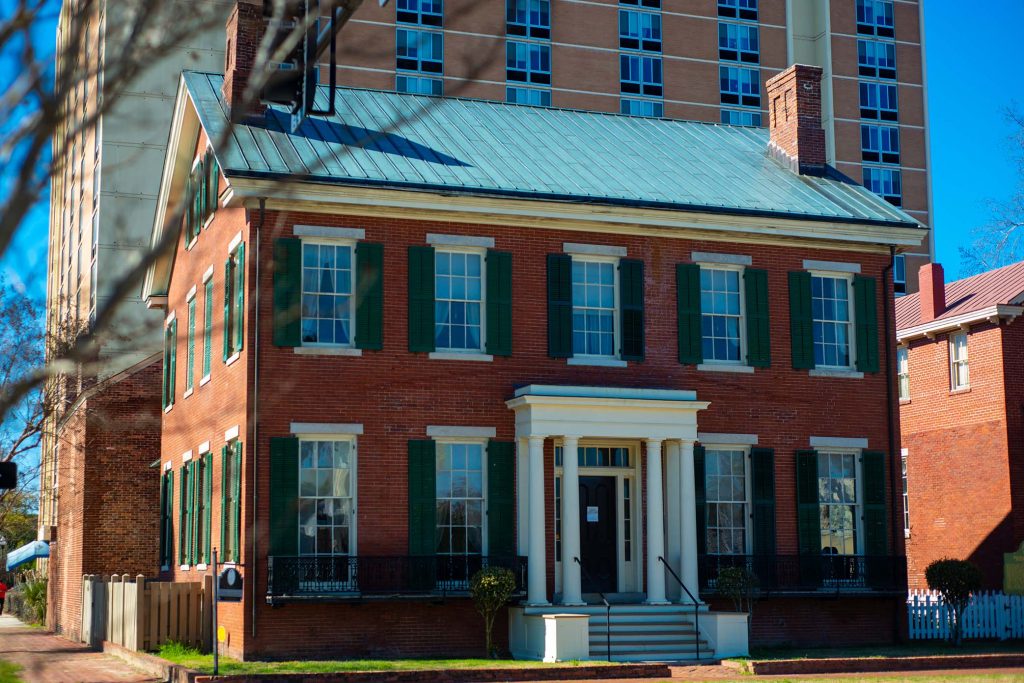
Boyhood Home of Woodrow Wilson
After tallying words at the Confederate Monument, the tour sends you to The Boyhood Home of President Woodrow Wilson. Wilson’s father was pastor of First Presbyterian Church during the Civil War. Some historians speculate that Wilson’s experience as a child during the Civil War influenced his reluctance to take the United States into World War I. Perhaps the use of his father’s church as a hospital during the war was a factor as well. Imagine a 6 year old playing on the grounds of a church where shattered men were recovering from their wounds – sometimes dying. Both the Boyhood home and the church are on Telfair Street.
Your goal before you leave the Boyhood Home is to name the university Wilson served as president of. Hint: the university is connected to Wilson’s religious upbringing. If that’s not enough of a hint, the answer can be found on the historical plaque outside the front of the building.
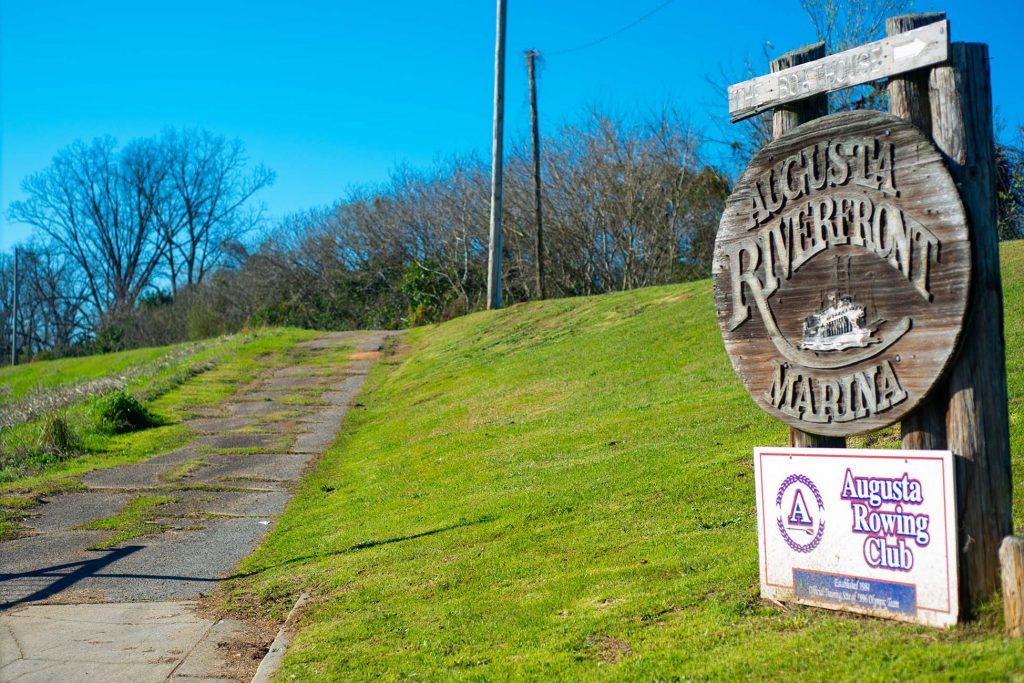
Augusta Riverfront Marina
The Riverfront Marina is one of the city’s recreation areas. You can rent bikes there, park your boat, grab a snack or rent a pontoon boat.
At this final stop, the tour gives you a set of coordinates and suggests taking a walk down the Augusta Riverwalk. It is a little misleading, because the final stop is off this side path near the entrance of the Augusta Riverfront Marina.
[adrotate banner=”45″]











